
|   |

|   |
|
May 2023 People will forget what you said, They will not remember what you wore Or how you looked But they will always remember How you made them feel - African American poet Maya Angelou 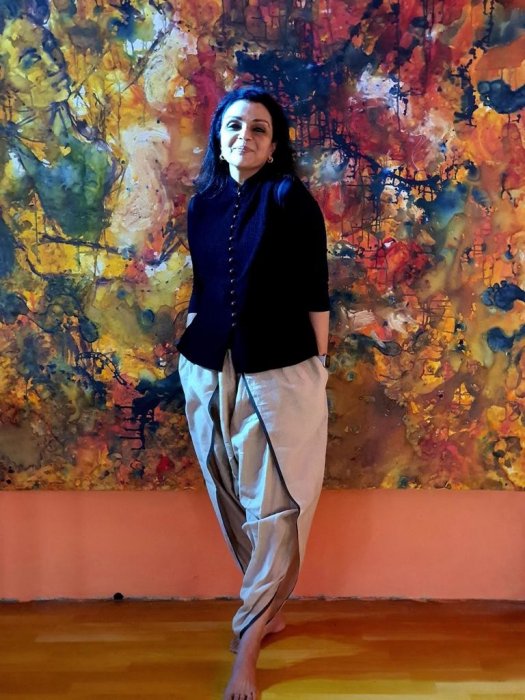
With World Dance Day just behind us, it is a good moment to indulge a bit longer in the delightful and sensorial plunge into a weekend of watching, listening and thinking about our world of Dance. I was in New Delhi and was able to attend some very interesting performances. #NEW DIMENSIONS  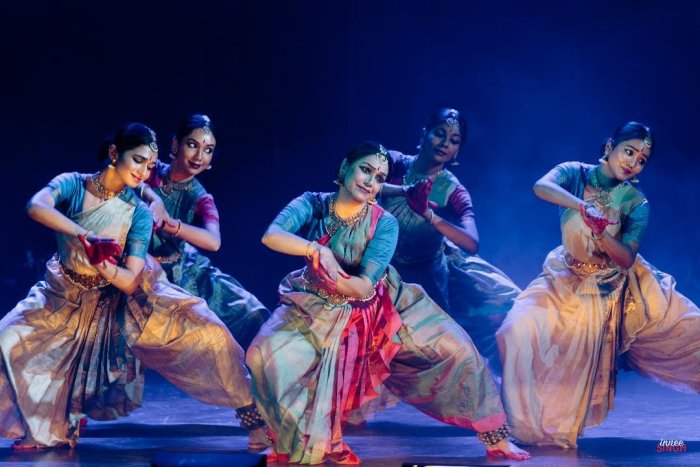 Rama Vaidyanathan and group (Photos: Innee Singh) Global Bharatanatyam diva Rama Vaidyanathan premiered her new ensemble production NEW DIMENSIONS TO MARGAM at the Habitat Centre. Accompanied by her daughter Sannidhi on the mridangam and four well trained students, the evening was an attempt to create a full length classical dance experience on the patterns and template of the Bharatanatyam 'Margam'. The opening piece KRISHNA PANCHAKA MALLARI showed some unusual movement phrases that explored space and time. The long flow of arms and supple use of the torso punctuated by crisp rhythm sequences kept the momentum until the end when the dancers slowly "submerged" themselves into the depths of awe and surrender to Krishna. Watching Rama in her long solo varnam structured around a Meera Bhajan brought back memories of Padma Subrahmanyam in Chennai. It was 50 (yes. 50!) years ago and the first time I had watched a Meera bhajan as a centre piece of a classical evening. Paddu Akka in an all white costume, her sister in law Shyamala Balasubramaniam singing in flowing notes and the dancer maintaining the "sthayi" (character mode) of the mystic saint poet, created an unforgettable memory. Paddu Akka's nritta sequences were smoothly interwoven with the lyrics without the intervention of the expected Bharatanatyam prelude "talaangu takadiku takatadinginatom." Rama is in top form and moves with speed and fluency. Her star power overshadowed the younger dancers who are all well trained but currently dancing like "Rama clones". It will take more experience for each of these talented women to find their own voice and stride. The third piece attempted humour in an unusual way. The students of the Maharashtrian Varkari saint poet tradition were portrayed as so completely immersed in the study of saint poet Panduranga that they forgot their daily duties until a warden (played by Rama) entered to send them home. The four dancers were beautifully coordinated and attempted theatrical dialogue at the start which sounded a trifle stilted but their enthusiasm shone through. It brought a chuckle to the audience who are unused to smiling or laughing out loud during a normally serious classical dance evening. There could be several questions raised about whether the evening contained nuggets of "newness" or not. Rama Vaidyanathan interjected her star power with a long solo to anchor the evening. Is attempting new pieces actually NEW for the Bharatanatyam field or simply new to the choreographer? One could clearly see the conscious attempt at crafting a full evening of dance while nudging at boundaries and keeping today's impatient audience in mind. It is always good for dance to raise questions and start conversations. The packed hall gave the show a standing ovation and Rama's popularity was clearly visible for all to see. NEW DIMENSIONS TO MARGAM has already played to a sold out evening at the NMACC in Mumbai and is on tour across the US in the coming months. However, the one comment I would like to make is that the red colour on every dancer's palms was distracting. It is a far cry from the gentle stain of henna/mehendi that Vyjayantimala wears. This bright cherry red does not enhance the dance or the dancer although it is being used by hundreds of dancers today as an "affect". Whatever happened to the centre circle and colouring the tips of the fingers? # NATYA VRIKSHA WEEKEND 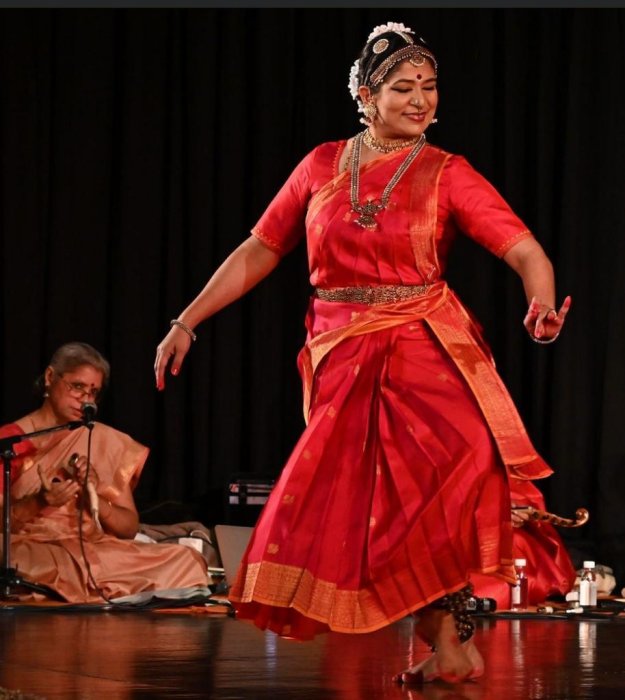 Divya Devaguptapu Marking the 16th year of her WORLD DANCE DAY celebrations, performer/curator Geeta Chandran mounted another impressive and thought provoking two day edition. Divya Devaguptapu in an immersive trance and in perfect simpatico with singer Ranjani Ramakrishnan was mesmerizing. Her opening piece on the eternal union of Radha and Krishna was saturated in intellectual reflection and thoughtful execution. Divya stubbornly refuses to adhere to programming mandates about time keeping and what she considers "over rehearsed western notions" of dancing the same piece in exactly the same way. Her "manodharma" is unusual in today's field and perhaps that is why she is rarely seen in the mainstream venues. She shared a comment with me that her performances are more than 50% improvisation which can only be possible if the musician is completely in sync with the dancer. As was Ranjani who sang brilliantly. In fact, she was the equal star of the evening along with Divya. It is to the credit of NATYA VRIKSHA's carefully developed audience that Divya completed her planned 3 dances that ended well past 9.30pm. A standing ovation was truly well deserved for this rare artiste who follows her own beat but could pose a challenge to many artistic directors and festival curators. We need more individuals who refuse to compromise in today's "anything goes" world. What we saw was the power of classical dance and music when it is well rehearsed, carefully ideated and joyously delivered. Preceding Divya was Shalakha Rai, the sprightly student of Madhavi Mudgal. Young and agile, she danced some legacy pieces first created for Odissi by Guru Kelucharan Mohapatra. To have these important choreographies passed through guru Madhavi Mudgal to the next generation is very special. Today, we don't have many such opportunities in Bharatanatyam, with many dancers changing and adapting the original versions of varnams, jathiswarams and other vintage pieces to their own tastes. 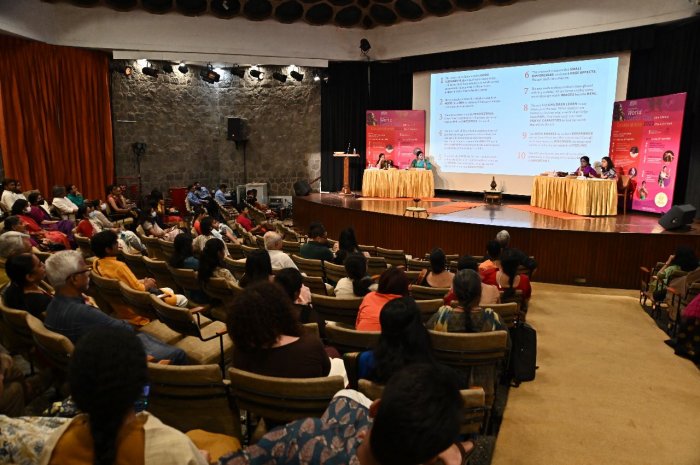 The most important take away for me was the 2 hour long session about ARTS IN EDUCATION. This is an often overlooked but fast growing area for dancers and deserves a serious look. As Geeta observed, "When economic futures are dwindling for serious performers, the arts education sector is growing with a good earning potential". Geeta moderated the panel along with Manjima Chatterjee. (Vice Principal, Shiv Nadar School, Noida; also, Central Arts Curriculum lead for Shiv Nadar Schools). The session included two Natya Vriksha students, academic Amruta Shruti and dancer Radhika Kathal. Their confidence and total involvement in the subject was palpable and the well-attended session had every audience member riveted. Through anecdotes and film clips, we were introduced to various experiments taking place at the SHIV NADAR SCHOOL CAMPUSES around New Delhi. That the schools have a total of 32 arts teachers is an inconceivable number in comparison to the single dance, music or arts teachers that most schools and colleges employ. Methods of introducing song, movement and choreography to young minds and bodies and finding novel ways to keep the interest while intersecting the areas of visual art, music, new poetry written for an occasion, joyfully including everyone, irrespective of ability or talent- and seeing the win-win outcome was a huge plus for me. With academics like Aadya Kaktikar of SNU intervening with thoughtful comments, it was clear that here was an example of intellectual and embodied learning in an exciting partnership on the same campus. I wish that more dance conferences would pay closer attention to this topic since the general complaint is that of diminishing economic prospects for performing artistes in India. #NMACC & INDIAN DANCE 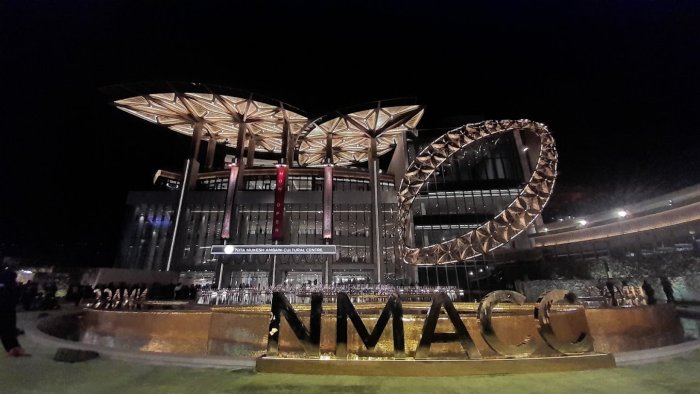 Dancers are beginning to talk in glowing terms about the newly opened NITA MUKESH AMBANI CULTURAL CENTRE- NMACC. A global PR launch filled with mostly Bollywood and international A Listers flooded our social media for days and weeks after the March 31st opening. Among the numerous clips on social media, I caught a glimpse of Aditi Mangaldas, Harikrishna Kalyanasundaram, his mother Mythili, Tanusree Shankar and some others. But film stars and global fashion dominated the glamorous spectacle. Now, curator and Kuchipudi dancer Amrita Lahiri has started programming several evenings with well-known names - Bijayini Satpathy, Vaibhav Arekar, Leela Samson, and Rama Vaidyanathan. Contemporary dance from Imphal's Surjit's MEE PAO is also scheduled. There is unanimous praise from all about the treatment and atmosphere provided, from the tone of communication to every aspect of the dancers' arrival and departure. #JAYA RAM - HEY RAM - RAM RAM 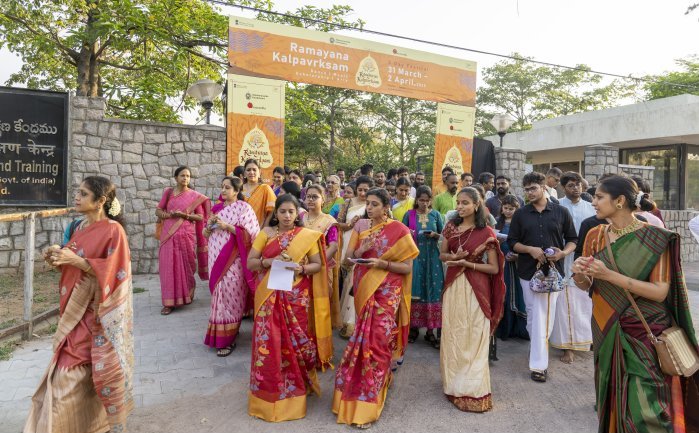 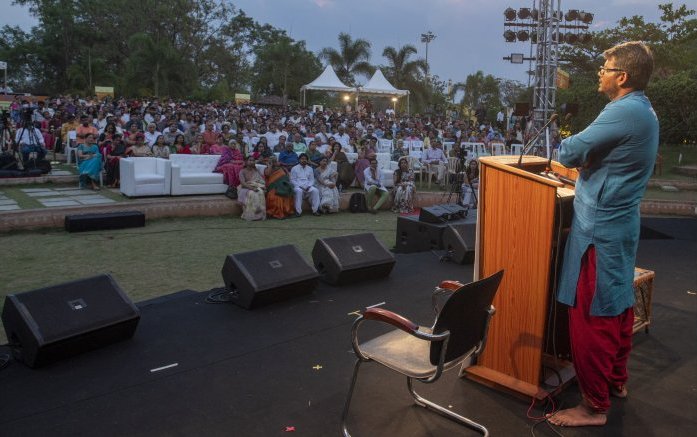 Ramayana Kalpavrksam This prince of Ayodhya is everywhere. Entrancing audiences at Esplanade theatre in Singapore and riveting hundreds of Hyderabadis from sunrise to sunset. Ramli Ibrahim and SUTRA dancers brought audiences to their feet after their spectacular ensemble performance of JAYA RAM. Ananda Shankar Jayant curated a rousing and engaging multi arts conclave titled RAMAYANA KALPAVRKSAM. According to several reports, the programming began with walks, chanting, singing and people gathered in the auditorium, charged with the energising atmosphere. The story of Rama and Sita is universal and has an appeal across generations and geographies. It would be lovely to see ballet and opera adapting it like Shakespeare's plays. #DANCE WRITING FOR SOCIAL MEDIA The new social media platform PIX STORY collaborated with the NARTHAKI portal to co-host a panel discussion about DIGITAL WRITING ON THE ARTS. Attended by 20 interested dancers (Rama Vaidyanathan brought several of her students) the speakers were RANJIT SAHAY (India Today), Ashish Mohan Khokar (MKDC- Mohan Khokar Dance Collection), Ranee Kumar (arts and society journalist) and myself. Mr. Sahay took us through the gradual demise of serious arts writing and the cursory assignment of a new reporter to a music or dance programme. The newbie would be given no context as to who and what he/she was covering. I have been often asked by such novices hours before a show in Delhi and Mumbai, "Madam-ji, I have been sent by my editor. Please tell me what you do?" At that point I would ask them to kindly read my WIKIPEDIA page to get an introduction to my dance world. When print publications began to feel the pressure of advertising, the first spaces to be sacrificed was the arts pages. Even today, THE HINDU and to some extent THE TELEGRAPH in Kolkata continue to hold out to the forces of commerce and the profit driven bottom line. Mr. Sahay said that dancers and musicians are now so desperate for any kind of visibility that they are more than willing to pay for a small photo or a mention in the WHAT'S HOT page. 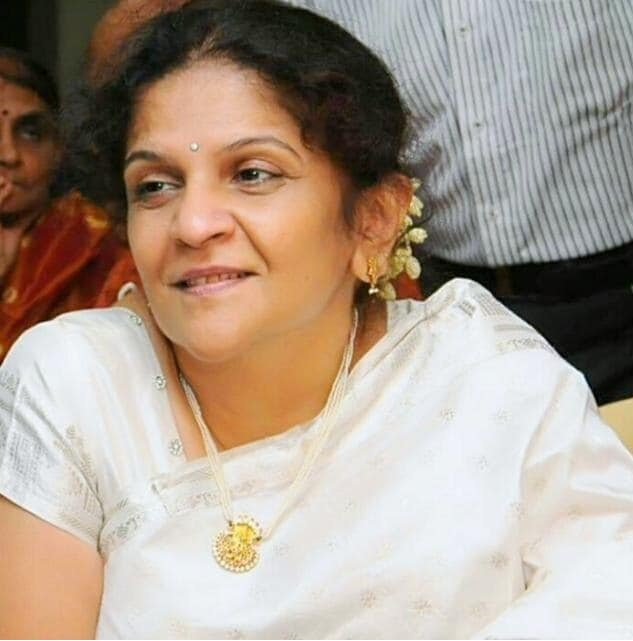 Ranee Kumar Ranee Kumar, a senior writer, spoke of her training in journalism. "Say all that you have to say in the first two paragraphs, in case the page editor decides to cut out some portions of your article for lack of space". She spoke of how she was very careful to accept assignments, do her homework and would fight for her copy to be retained without too many cuts. The headlines of the articles, however, were not in her hands. It was up to the editor to make that choice, sometimes not to the best effect. 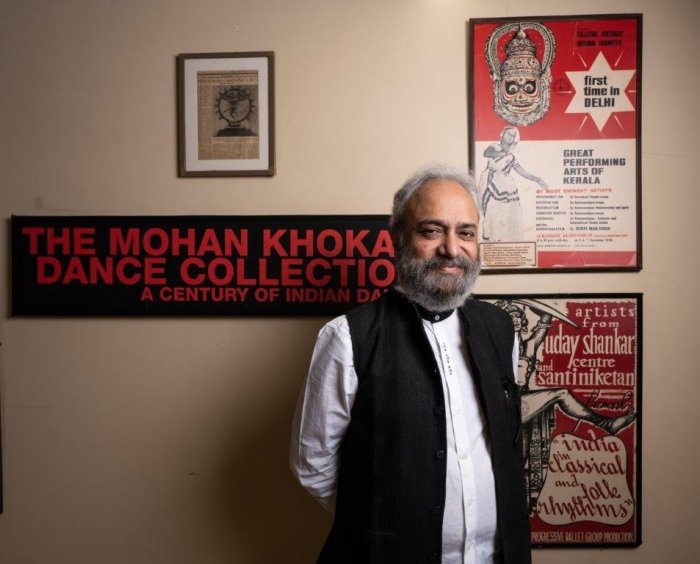 Ashish Khokar Ashish Khokar, now custodian of India's largest and most extensive dance archive (temporarily housed in the IGNCA) brought some photos which he invited some young dancers to look at and respond to in 50 words or less. Two reactions were spontaneous and beautiful, eliciting applause from all. Ashish spoke of the freedom of the critic to speak his/her mind about a performance without interference from the editor of the publication. Gradually, the growing anger among the famous performers caused frequent altercations with the writers about less than glowing remarks. The frequent fraternising between dance critic and the artistes also made it awkward for a writer to be truly objective. Today some dancers even threaten writers with dire consequences if a single negative remark is included. As an aside, every dancer must take time to visit the temporary collection currently housed in the IGNCA building in New Delhi. It is an astonishing compilation of Sri Mohan Khokar and his single minded mad passion for dance! My talk centred about the amount of misinformation that existed about dance writing. Writers were either unprepared or hesitant to approach this area since it seemed laced with land mines! Since NARTHAKI is now into 24th year online, our team has witnessed the gradual evaporation of arts writing in print and almost every kind of discourse moving online. Brevity with relevant detail has become paramount. Photos and images were mandatory to keep the reader's attention who was mostly perusing the text on hand held instruments. 300 to 500 words had now been reduced to a photo and 50 words! Instagram has birthed a whole new challenge of Reels with its ability to assemble a 90 second montage of a dancer's photo and generate script on the screen as an INSTA-CRITIQUE! Add to that CHATGPT and Artificial Intelligence and we are watching a sea change in how we are all going to be consuming and being consumed by technology! I did share the constant challenge we faced as a dance portal of trying to invite writers across identities and anyone interested in engaging with the performing arts. Ranjit Sahay pointed out that there were very few domain experts present today. To have someone who is NOT a performer and who could describe the current landscape of classical or contemporary dance or music was almost impossible. The upsurge of interest in dance history, the complex and often unequal collaborations between various caste locations needed closer scrutiny. The challenge of reading only one narrative without listening to all voices was voiced. The general feeling among the young students who attended the session was that social media, while useful to put across an individual's talent and presence, was also a muddled area that pushed people to take sides and turn away rather than have an actual conversation. #UNSPOKEN REALITIES 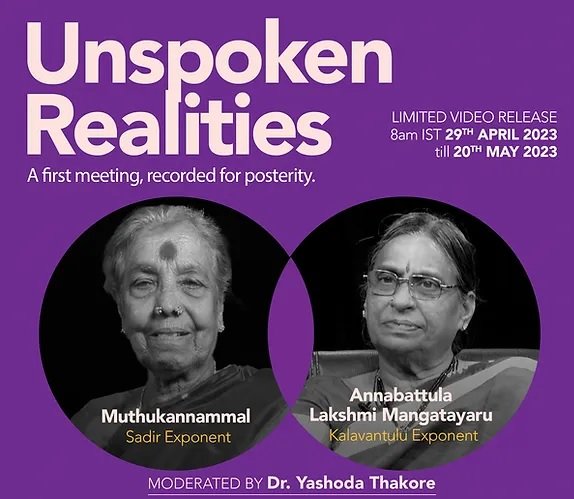 A one of a kind meeting between two hereditary artistes, Tamilnadu's Sadir performer Muthukannammal and Andhra's Annabattula Lakshmi Mangatayaru, a Kalavantulu exponent, was organised earlier this year. The video recording is now available digitally for anyone interested in listening to their real life experiences. The hereditary dancer has been written about and dissected in numerous ways by several academics. This encounter between two women, who had never met face to face before, is a rare opportunity to be in the presence of lived history with no mediation except in translation. Supported by KALAVAHINI TRUST and produced by SNS ARTS CONSULTANCY, dancers can request viewing of the session in the links below. India ; Global #SAVE KALAKSHETRA-METOO & MORE 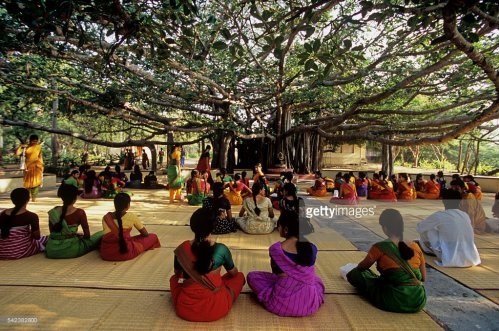 It is a still evolving story. The national tremors of the students protest of March 30th is still being played out on social media and in the courts. More and more information is slowly emerging and while the summer holidays are on, all eyes are on what will happen when the new batch of students enter the institution in June/July. The Kalakshetra issue had national and international traction but it has given way to the current outrage of the female wrestlers. It has been interesting to watch the entire nation rally behind the protesting women who have accused a powerful politician of sexual transgression. The Kalakshetra protest, however, did not galvanize the Bharatanatyam or the larger dance community (do we actually have one?) to voice their opinions except in whisper networks. Again, we have two sides - in confrontation - emotional and sometimes even illogical but then social media can cherry pick and spin several narratives in many directions from one incident. Again, I would like to mention here that Kalakshetra is but one of the four national dance institutions of excellence that is under the control of the central government. The other three are Kathak Kendra, Jawaharlal Nehru Manipur Dance Academy and Koodiyattam Kendra. Have the other three centres examined their own ICC (Internal Complaints Committee), POSH (Prevention of Sexual Harassment) and PoCSO (Protection of Children from Sexual Offences) acts? Since many minors are learning dance and music, how are the governing councils formed? The courts have directed the Kalakshetra board to include a parent and a student. Will there be a greater scrutiny in how these important institutions are managed going forward? In all this furore, I attended another session in which the Tamil theatre community discussed the serious sexual transgressions of two well-known directors. With theatre and dance companies employing less than 10 full time staff, ICC rules typically do not apply to arts groups. Then, the onus falls on each individual and leader/guru/director to maintain a code of ethics. Will this quasi professional-informal-family style way of creating and performing dance, music and theatre continue to be a mine field for young students? Will shortened public memory continue to celebrate and felicitate offenders again and again? Will parents continue to bring their children in droves to learn dance and music? And will they, if their child is affected, hush it up for the sake of public image and social convention? The appeal of the live arts will not dim but the Kalakshetra controversy has made many think about matters that may not have appeared important earlier. We at NARTHAKI are also making changes at many levels and you will begin to see the results in the months ahead. Getting out of cozy cocoons takes effort. Disruption is sometimes for the better. Throughout April we have received daily testimonies to the impact of this portal that is now in its 24th year online. Thank you for the goodwill and appreciation. We look to the months and years ahead and hope to continue the journey with sensitivity and responsibility. Keeping faith in the power of dance - to heal, to energise and to aid those who need to touch a moment of inner joy and outer radiance, I leave you with wishes for a wonderful month ahead. My travels have begun and I am hitting the road! Until we meet again... Anita R Ratnam New York / San Francisco Twitter: @aratnam Facebook: Anita R Ratnam Instagram: @anitaratnam Blog: THE A LIST / anita-ratnam.blogspot.in Post your comments |